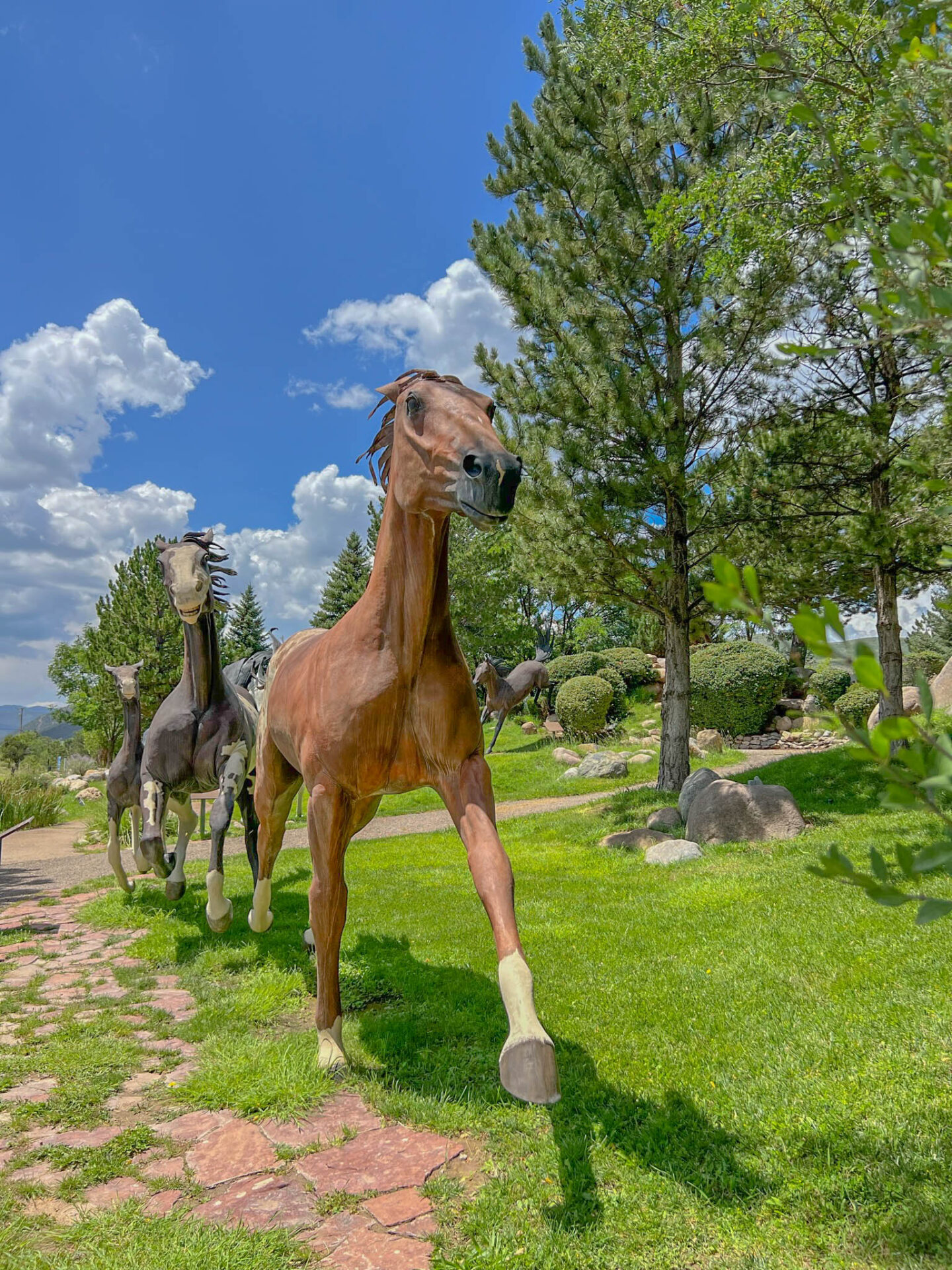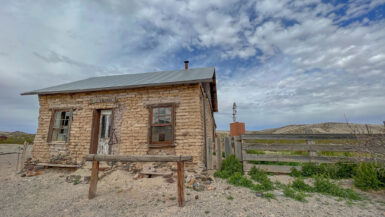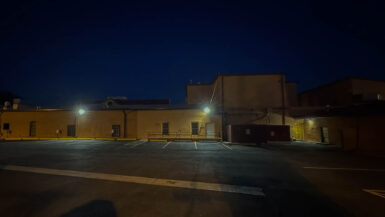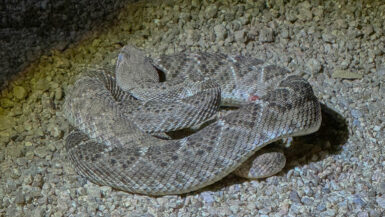Discover Ruidoso Downs Race Track and the Free Spirits at Noisy Water—an impressive bronze horse sculpture display and unique roadside stop in southern New Mexico.
When it comes to horse racing, I’m pretty clueless. Then again, I’m pretty clueless about a lot of things—so maybe that’s not saying much. I haven’t spent much time around horses, and I’ve never been into gambling. All things considered, it’s probably for the best that I’d never stepped foot on a racetrack … until now.
On a sunny August afternoon, I found myself pulling into the parking lot of Ruidoso Downs Race Track and Casino. Why? Because I was writing about Ruidoso Downs—a town of about 3,000 people named after the track itself. It was time for a crash course in Quarter Horse racing, whether I was ready or not.


Table of Contents
Heads up: Some of the links in this post are affiliate links. If you buy something through them, it helps support this site—at no extra cost to you. I only recommend stuff I genuinely use and trust.
Brief History of Ruidoso Downs
Ruidoso Downs—also known as “The Downs” if you want to sound like a local—is technically a suburb of Ruidoso and part of what’s called the Ruidoso Micropolitan Area. I didn’t even know “micropolitan” was a real word. It sounds like something a government committee made up when they couldn’t agree on just calling it a small town.
So what exactly is a micropolitan area? In short, it refers to towns with at least 10,000 but fewer than 50,000 residents. A metropolitan area, on the other hand, has a core urban population of at least 50,000. Since the combined population of Ruidoso, Ruidoso Downs, and Alto adds up to over 21,000, we’re officially in micropolitan territory. Not the most thrilling piece of trivia—but hey, now we know.
While the name “Ruidoso Downs” didn’t show up on official city maps until 2002, the horse racing tradition here goes way back. Spanish-speaking settlers were racing horses and hosting rodeos in the area as far back as the 1840s. By the 1930s and ’40s, informal races were taking place in a meadow that used to be cornfields—right where the current racetrack sits today.
Over the years, the place has evolved quite a bit. In 1945, a rodeo grandstand was relocated 22 miles from the village of Capitan to its new home here. Fast forward a few decades, and you’ve got the addition of a sales pavilion and sports theater in the 1990s, and a full-blown casino opening in 1999. And just to keep things interesting, the venue has also hosted concerts, camel races, and yes—even ostrich races.
📖 If you’re eager to dig deeper into the area’s history, I recommend Ruidoso and Ruidoso Downs (Images of America, Arcadia Publishing) — a photo-rich book that brings the region’s logging, racing, and tourism roots to life.
These days, Ruidoso Downs describes itself as “the only horse track in the United States and Europe that has a separate quarter horse straightaway and oval thoroughbred tracks.” In plain English, that means the track was purpose-built to accommodate both types of racing—short-distance sprints for quarter horses and longer-distance oval races for thoroughbreds.
However, recent events have led to significant changes. In 2024, Ruidoso Downs faced severe flooding that damaged the thoroughbred track, leaving the quarter horse straightaway largely unscathed. As a result, management decided to focus exclusively on quarter horse racing for the 2025 season—kicking off May 23, 2025—embracing the track’s deep roots and strong reputation in that discipline. So, while the dual-track feature remains a notable aspect of Ruidoso Downs’ identity, the current emphasis is on quarter horse racing, aligning with the track’s legacy and the community’s passion for this high-speed sport.
Rather than pretend I know something about horse racing, I’ll share what it’s like to show up as a first-timer at Ruidoso Downs Race Track—no betting strategy, no insider tips, just a curious guy trying to learn the ropes.
A Day at the Races… or at least 90 Minutes
I decided to check out Ruidoso Downs during its annual Zia Festival. When I saw the word festival, I pictured shoulder-to-shoulder crowds, long lines, and maybe a guy in a turkey leg costume. So I considered buying a reserved seat in advance. To play it safe, I arrived early—around noon—and was pleasantly surprised to find plenty of parking. So far, so good.
From the lot, the first thing that struck me was the setting. Even before I saw a single horse, I could see why people come here. The track sits against a backdrop of rolling hills and open sky—a solid place to spend an afternoon, even if you don’t know a thing about horse racing (guilty).
As I walked toward the entrance, I instinctively reached for my wallet, assuming there’d be a ticket booth or someone taking payment. Nope. No lines, no ticket takers, no turnstiles. I just strolled right in like I’d done this a hundred times.
Once inside the seating area, here’s what I saw:

Not exactly a seething mass of humanity. Needless to say, I didn’t need to buy a seat. My guess is the crowds pick up later in the day, but I wasn’t complaining. A quiet grandstand and plenty of personal space suited me just fine.
Placing a Bet (Sort Of)
It looked like a race was about to start, so I figured it was time to learn how to place a bet. There were plenty of betting windows, so I scanned the area for someone who looked like they’d been doing this since Secretariat was in diapers. My strategy: find a seasoned pro and follow their lead.
While I waited, I noticed a sign on the wall that read, “Be Who You Are.” Message received. Who am I? A total rookie with no idea how horse betting works—but at least I’m self-aware.
Armed with that confidence (and not much else), I stepped up to the window.

I greeted the seasoned gentleman behind the counter and admitted it was my first time at a horse race. I told him I was looking for a little guidance—ideally the kind that leads to picking a winner. He smiled the way someone does when they’ve heard that line a hundred times and pointed me toward the monitors on the wall.
“Check the odds,” he said. “Then come back with the horse number and how much you want to bet.”
Fair enough. I asked him—just out of curiosity—which horse he would pick based on the odds. He laughed and said he couldn’t tell me that, but thankfully spared me from total confusion by pointing out the two horses with the best odds on the screen.
I thanked him and wandered over to a nearby monitor for a closer look. The race had nine horses, but the screen I chose only showed six. So now I was back to square one—slightly more informed, but still confused.

Rather than overthink it, I went with one of the two horses the man said had the best odds and picked the number I liked better. That was the extent of my strategy. I returned to the window and said, with great conviction, “Horse #2.”
He nodded and asked how much I wanted to bet. I went big: five dollars. High stakes, I know.
He told me that if Horse #2 came through, I could return to his window—or any window—to cash in. He printed the ticket, handed it over, and just like that, I was in the game.

With a little time to kill before the race, I wandered around the concourse to get my bearings. Eventually, I found another monitor—this one actually listed all the horses and their odds, which felt like a small win. Maybe I should’ve started there.

Had I seen this list before placing my bet, I might’ve gone with “Firethepoliticians”—not for strategic reasons, just because the name made me smile. Instead, my bet was already with “Eye Capo,” which sounded… vaguely unsettling. I use a capo when I play guitar, and I definitely wouldn’t want one anywhere near my eye.
Later, I learned that capo means “boss” or “chief” in Italian—which makes a lot more sense in a racing context. Still, not the most reassuring name if you’re going purely off first impressions.
Vendors of Ruidoso Downs
As I wandered the grounds, I passed a handful of vendors selling all kinds of western-themed gear—cowboy hats, boots, belt buckles, you name it. A few stalls offered local crafts and souvenirs, the kind of stuff you browse even if you’re not planning to buy anything. It added a laid-back, local feel to the track—part racetrack, part mini western market.


The Race Begins
Finally, it was race time. I made my way down to the rail, where a small group of spectators had already claimed spots for a front-row view. It felt like the right place to be—close enough to hear the thunder of hooves and maybe catch a little dust in the face for authenticity.


A few minutes later, it was go-time. The horses lined up at the gate, and the energy shifted—quiet conversations gave way to focused silence. Well, not really. But I was focused.




It was over almost as soon as it began. I quickly realized this wasn’t a loop around the track—it was a straight-shot sprint down the quarter horse straightaway. Fine by me. My horse won.
Still slightly in disbelief, I checked the monitors to confirm. Yep—there it was in pixels: Eye Capo crossed the line first. My in-depth, highly scientific betting method had paid off.

Collecting My Winnings
Feeling like I’d just hit the jackpot, I made my way back to the ticket counter with a spring in my step and visions of early retirement in my head. My friend behind the ticket counter congratulated me, looked up my winnings, and handed me a stack of bills. A small stack. Ok, a few bills and two coins. I was now holding $14.50 in my hands.
Since there was no one behind me, we chatted for a bit. He joked that I’d probably be hooked on horse racing now that I’d tasted victory. I asked how long he’d been involved with the track, and he told me he’d been coming for ten years and working there for the last five. Then he added—with a smile—that his wife used to complain he spent too much time at the races, so he solved the problem by getting a job there. “Now when I go,” he said, “I’m just going to work.”
We shared a few laughs, and I headed out with my modest fortune in hand.
Alone once more, it was time to bask in the glory of my $9.50 in profit. Not quite enough for early retirement. But just enough for a Blue Bell ice cream cone, so I went with that option instead.


My Retirement From Horse Race Betting
After some deep reflection—roughly 30 seconds—I decided it was time to retire from horse race betting. I was walking away with a positive return on investment, which felt like the right note to end on.
My career earnings? $3.50 in cash and one Blue Bell ice cream cone. Not bad for 90 minutes of effort. And more importantly, I still had my dignity. Sort of.
As I strolled away, the taste of cookies and cream still lingering, I turned back for one last look at the track that made it all possible. My horse racing career may have been brief, but it was undefeated. I’ll always remember those golden minutes with a grin.
And between you and me—I wouldn’t be surprised if I find myself back at the rail someday. Strictly for research purposes, of course.

“Free Spirits at Noisy Water”
As I was leaving Ruidoso Downs, something caught my eye—eight larger-than-life horses galloping through what looked like a park just off the main road. Since I had a three-hour drive ahead of me, I figured a leg stretch was in order. I’m glad I stopped.
What I stumbled upon was Free Spirits at Noisy Water, a bronze sculpture display created by artist Dave McGary in 1995. The installation sits in front of the now-closed Hubbard Museum of the American West and features eight massive horse sculptures representing seven American breeds: Thoroughbred, Quarter Horse, Appaloosa, Paint, Arabian, Morgan, and Standardbred.
Each sculpture weighs somewhere between 3,000 and 5,000 pounds—but despite all that weight, the horses are dynamically posed in motion, balanced on just nine hooves in total. Not an easy feat to pull off in bronze, to say the least.
McGary, originally from Cody, Wyoming, trained under artist Harry Jackson before heading to Italy to study bronze casting. He eventually set up shop in New Mexico, where he became known for his realistic and respectful depictions of Native American people and culture. While most of his work focused on human figures, Free Spirits shows that he could bring the same sense of life and movement to animals too.
The entire installation spans 255 feet, making it one of the largest equine sculptures in the world. The museum itself has been closed since 2019, but the horses still run wild—frozen in motion—against the backdrop of the Ruidoso hills.
If you’re ever in the area, it’s definitely worth a stop. You don’t have to be a horse person to be impressed.
You can learn more about the artist and his legacy at www.davemcgary.com.
Here’s how Dave McGary once described his vision:
“How I want to be remembered… For having documented, with respect, the culture of Native American people. For being innovative and establishing my own techniques and style of work. I hope I have changed the way people look at bronze sculpture. For showing that there really are no limits in what is possible in bronze—that we can capture an amazing amount of detail and depth of color for another level of realism.” — Dave McGary
Mission accomplished, Dave. A job well done.





Thought for the Week
For this week’s edition of the “Thought for the Week,” I decided to go with a horse theme—inspired by my visit to the Ruidoso Downs Race Track and the incredible Free Spirits at Noisy Water sculpture display by artist Dave McGary.
This week’s quote comes from Jimmy Lovine—a guy who knows a thing or two about focus. He’s produced albums for legends like Bruce Springsteen and U2, co-founded Interscope Records, and helped launch Beats by Dre before selling it to Apple for $3 billion. His career is a reminder that staying true to your vision—and not getting thrown off by the competition—can lead to something extraordinary.
Whether you’re rounding a bend in life or just trying to keep your stride, there’s wisdom in staying focused on your own lane.
“You try to do the best with what you’ve got and ignore everything else. That’s why horses get blinders in horse racing: You look at the horse next to you, and you lose a step.”
— Jimmy Lovine
Thanks for reading and happy travels!
Mark (The New Mexico Travel Guy)

Mark Aspelin, The New Mexico Travel Guy (www.newmexicotravelguy.com), is a travel writer, conservation biologist, project manager, and author of two books. He’s visited over 100 countries and all 50 U.S. states—just enough to land in the Travelers’ Century Club and make choosing a favorite place nearly impossible. He’s currently on a questionable mission to visit every town in New Mexico (there are over 500) and write a story about each one, with plans to wrap it up sometime before his early to mid 100s. Mark balances his writing with conservation and project work from his home base in the East Mountains near Albuquerque, New Mexico.





Leave a reply